Gianluigi Ciocca
A health telemonitoring platform based on data integration from different sources
Jul 28, 2022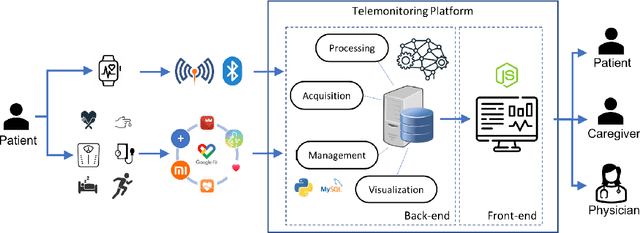
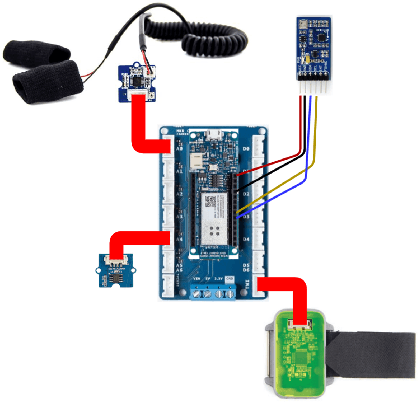
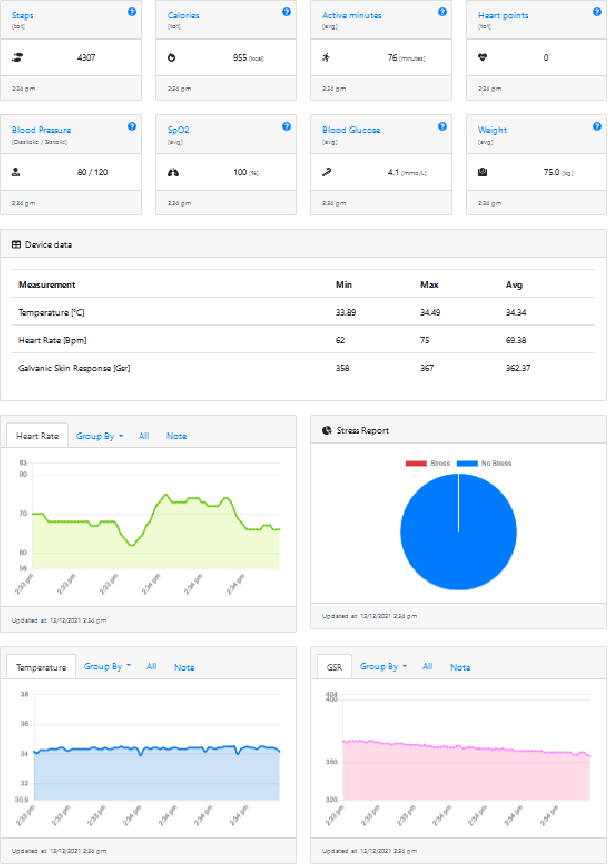
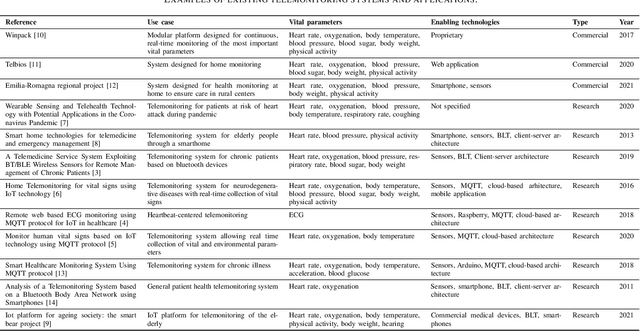
Abstract:The management of people with long-term or chronic illness is one of the biggest challenges for national health systems. In fact, these diseases are among the leading causes of hospitalization, especially for the elderly, and huge amount of resources required to monitor them leads to problems with sustainability of the healthcare systems. The increasing diffusion of portable devices and new connectivity technologies allows the implementation of telemonitoring system capable of providing support to health care providers and lighten the burden on hospitals and clinics. In this paper, we present the implementation of a telemonitoring platform for healthcare, designed to capture several types of physiological health parameters from different consumer mobile and custom devices. Consumer medical devices can be integrated into the platform via the Google Fit ecosystem that supports hundreds of devices, while custom devices can directly interact with the platform with standard communication protocols. The platform is designed to process the acquired data using machine learning algorithms, and to provide patients and physicians the physiological health parameters with a user-friendly, comprehensive, and easy to understand dashboard which monitors the parameters through time. Preliminary usability tests show a good user satisfaction in terms of functionality and usefulness.
How Far Can You Get By Combining Change Detection Algorithms?
Apr 04, 2018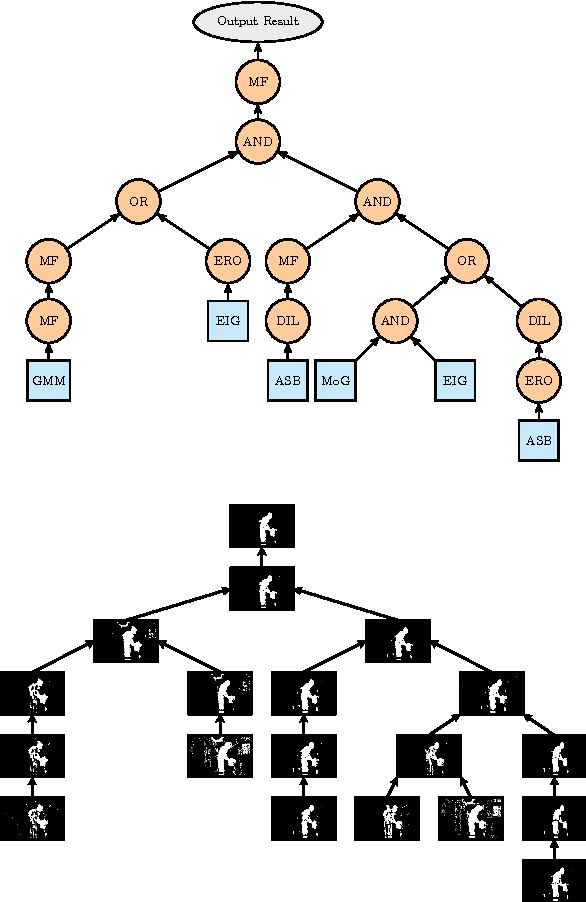
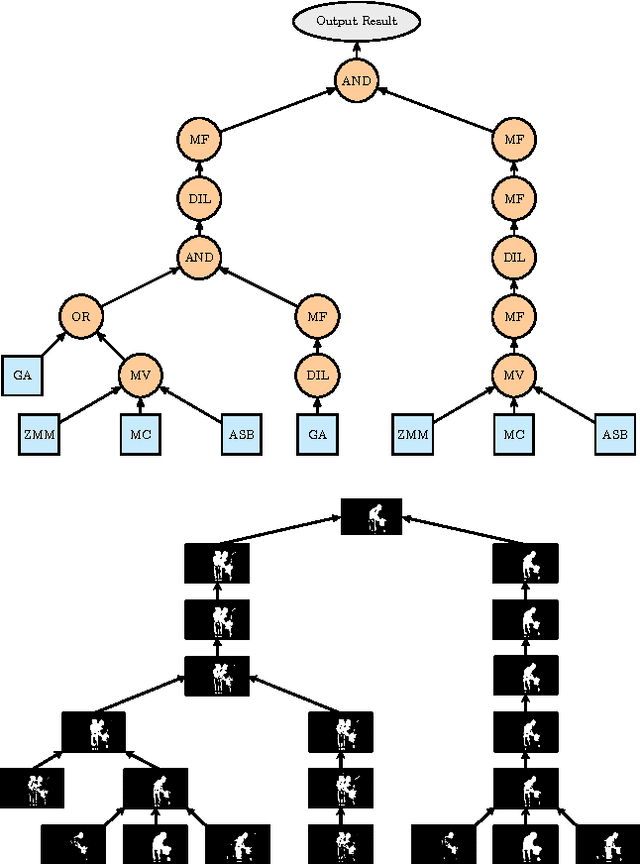
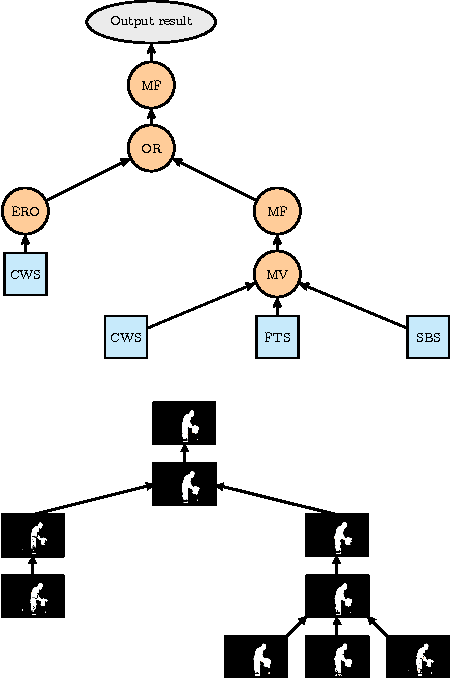
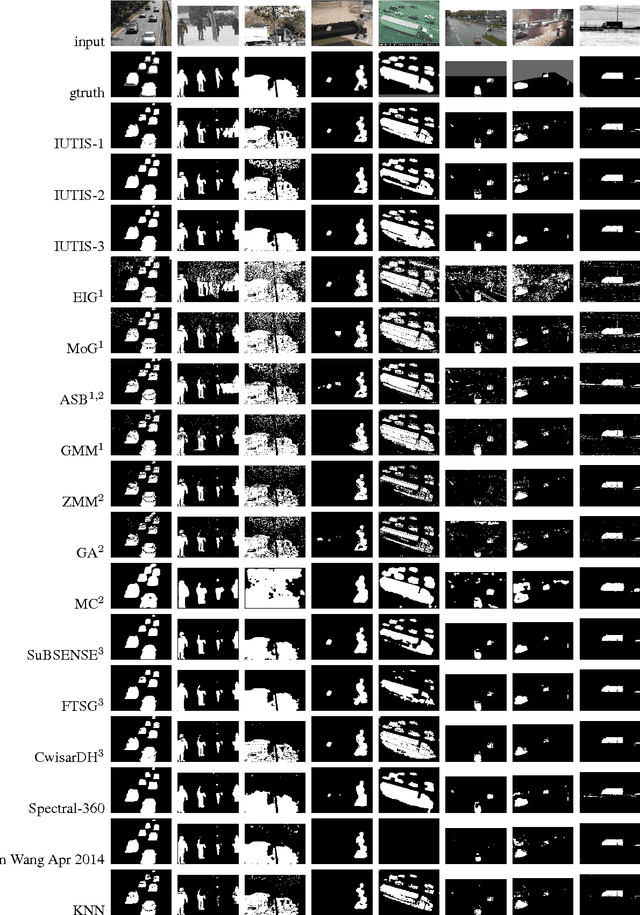
Abstract:Given the existence of many change detection algorithms, each with its own peculiarities and strengths, we propose a combination strategy, that we termed IUTIS (In Unity There Is Strength), based on a genetic Programming framework. This combination strategy is aimed at leveraging the strengths of the algorithms and compensate for their weakness. In this paper we show our findings in applying the proposed strategy in two different scenarios. The first scenario is purely performance-based. The second scenario performance and efficiency must be balanced. Results demonstrate that starting from simple algorithms we can achieve comparable results with respect to more complex state-of-the-art change detection algorithms, while keeping the computational complexity affordable for real-time applications.
CURL: Co-trained Unsupervised Representation Learning for Image Classification
Sep 11, 2015



Abstract:In this paper we propose a strategy for semi-supervised image classification that leverages unsupervised representation learning and co-training. The strategy, that is called CURL from Co-trained Unsupervised Representation Learning, iteratively builds two classifiers on two different views of the data. The two views correspond to different representations learned from both labeled and unlabeled data and differ in the fusion scheme used to combine the image features. To assess the performance of our proposal, we conducted several experiments on widely used data sets for scene and object recognition. We considered three scenarios (inductive, transductive and self-taught learning) that differ in the strategy followed to exploit the unlabeled data. As image features we considered a combination of GIST, PHOG, and LBP as well as features extracted from a Convolutional Neural Network. Moreover, two embodiments of CURL are investigated: one using Ensemble Projection as unsupervised representation learning coupled with Logistic Regression, and one based on LapSVM. The results show that CURL clearly outperforms other supervised and semi-supervised learning methods in the state of the art.
User Preferences Modeling and Learning for Pleasing Photo Collage Generation
Jun 01, 2015



Abstract:In this paper we consider how to automatically create pleasing photo collages created by placing a set of images on a limited canvas area. The task is formulated as an optimization problem. Differently from existing state-of-the-art approaches, we here exploit subjective experiments to model and learn pleasantness from user preferences. To this end, we design an experimental framework for the identification of the criteria that need to be taken into account to generate a pleasing photo collage. Five different thematic photo datasets are used to create collages using state-of-the-art criteria. A first subjective experiment where several subjects evaluated the collages, emphasizes that different criteria are involved in the subjective definition of pleasantness. We then identify new global and local criteria and design algorithms to quantify them. The relative importance of these criteria are automatically learned by exploiting the user preferences, and new collages are generated. To validate our framework, we performed several psycho-visual experiments involving different users. The results shows that the proposed framework allows to learn a novel computational model which effectively encodes an inter-user definition of pleasantness. The learned definition of pleasantness generalizes well to new photo datasets of different themes and sizes not used in the learning. Moreover, compared with two state of the art approaches, the collages created using our framework are preferred by the majority of the users.
IAT - Image Annotation Tool: Manual
Feb 18, 2015



Abstract:The annotation of image and video data of large datasets is a fundamental task in multimedia information retrieval and computer vision applications. In order to support the users during the image and video annotation process, several software tools have been developed to provide them with a graphical environment which helps drawing object contours, handling tracking information and specifying object metadata. Here we introduce a preliminary version of the image annotation tools developed at the Imaging and Vision Laboratory.
 Add to Chrome
Add to Chrome Add to Firefox
Add to Firefox Add to Edge
Add to Edge